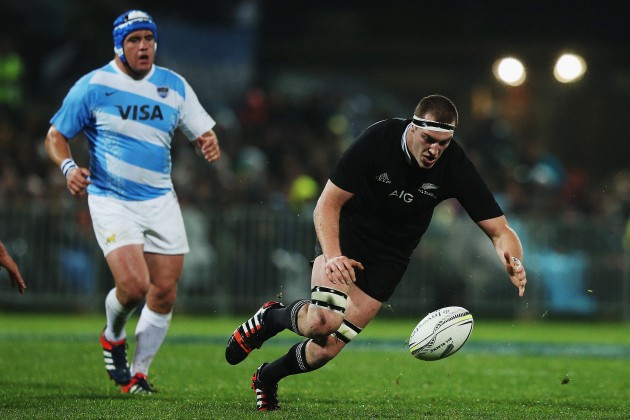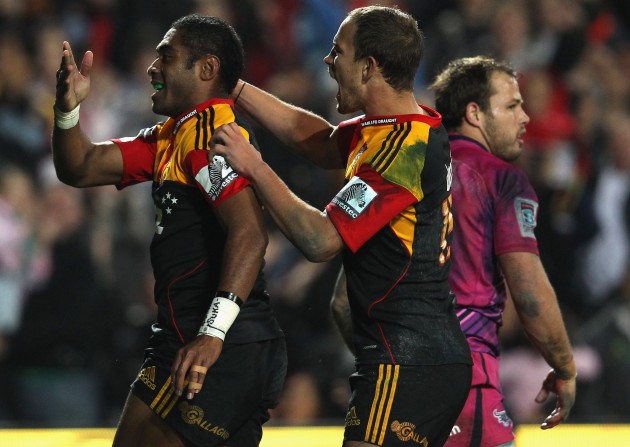South Africa are next to tackle a New Zealand juggernaut that shows no sign of slowing. A moment of class by Brodie Retallick last weekend highlights what makes the Kiwis so special.
If you had to name one player who summed up the world-beating All Blacks, who would it be?
Richie McCaw? It would be hard to disagree. Dan Carter? Hasn’t played enough lately. Kieran Read? Not a bad shout. Julian Savea? Phenomenal finisher but the wrong answer.
No, the name springing to this observer’s lips is Brodie Retallick, the 23-year-old lock who has rattled up 30 caps since bursting on the Test scene against Ireland in Auckland two years ago.
The Chiefs forward is hard to miss. At more than 6ft 8in and just shy of 19st, he has a presence about him that dwarfs even these impressive dimensions.
Visually he’s intimidating, somewhat reminiscent of the late Jaws, James Bond’s nemesis with the steel-capped teeth. And because of his size you might think he’s clumsy; when Retallick piled into a ruck against Argentina last weekend, arms and legs flying, commentator Justin Marshall laughed.
Frightening skill
But Retallick is neither clumsy nor slow, and the things he can do with a rugby ball are much scarier than his physical appearance.
Against the Pumas he was responsible for the best moment bar none in either hemisphere last weekend – better even than Robert Barbieri’s ingenious ball-hopping ploy at the back of Leicester’s scrum.
In the build-up to the All Blacks’ first try, Retallick pounced on a Beauden Barrett grubber kick, his giant frame horizontal to the ground, then sprang to his feet in an instant, spun out of a tackle and presented the ball perfectly, pencil style, at the ruck for his team-mates.
The speed and dexterity was astonishing for such a big man. In fact, it was astonishing for a small man. Here in a nutshell was what makes New Zealand stand out from the rest – the ball skills of their tight forwards, the players who in most teams need to be used sparingly in an attack, if not tucked out of sight altogether.
Phase after phase
The effect of fielding 15 ball players is that priceless goal of continuity. The All Blacks’ last-gasp try in Dublin last year, which enabled them to achieve a 100% win record in 2013, came after a14-phase move.
In this year’s Super Rugby, too, we saw the New Zealand franchises maintain the remorseless continuity that tires and breaks down opponents. Retallick’s Chiefs team scored three tries in the last 10 minutes to grab a draw at the Bulls, with the final length-of-field score by Aaron Cruden crowning a 12-phase, 31-pass sequence.
Examine that move in detail and it’s littered with ‘basic’ skills that Kiwi forwards take for granted. Replacement prop Josh Hohneck alone makes a catch at full stretch, a one-armed offload and a pass from the base as an acting half-back.
Liam Messam makes a pick-up off his toes, replacement lock Mike Fitzgerald makes a diving catch-and-pass, and severalother forwards handle the ball – in fact, within the move forwards are responsible for seven passes and 12 pass receptions.
Such skills are backed up by accurate decision-making – when to take the ball into contact, or make a second roll to thwart a defender, or pass off the ground rather than set up a slower ruck – and the end result is a match-saving try that would be beyond most sides.
20 and counting
Retallick is central to this attacking game with the All Blacks, and England are another team who can vouch for his effectiveness, because it was Retallick who attracted two defenders and sprung Owen Franks through the line at Twickenham last autumn – leading to Read’s try on the ensuing phase.
This is what the rest of the world is up against, with South Africa next to take on the world champions – unbeaten for 20 matches – on Saturday in the Rugby Championship.
Springbok skipper Jean de Villiers will winhis 100th cap in Wellington and good luck to him – he’ll need it if the all-singing, all-dancing All Blacks are to be slowed in their tracks.






